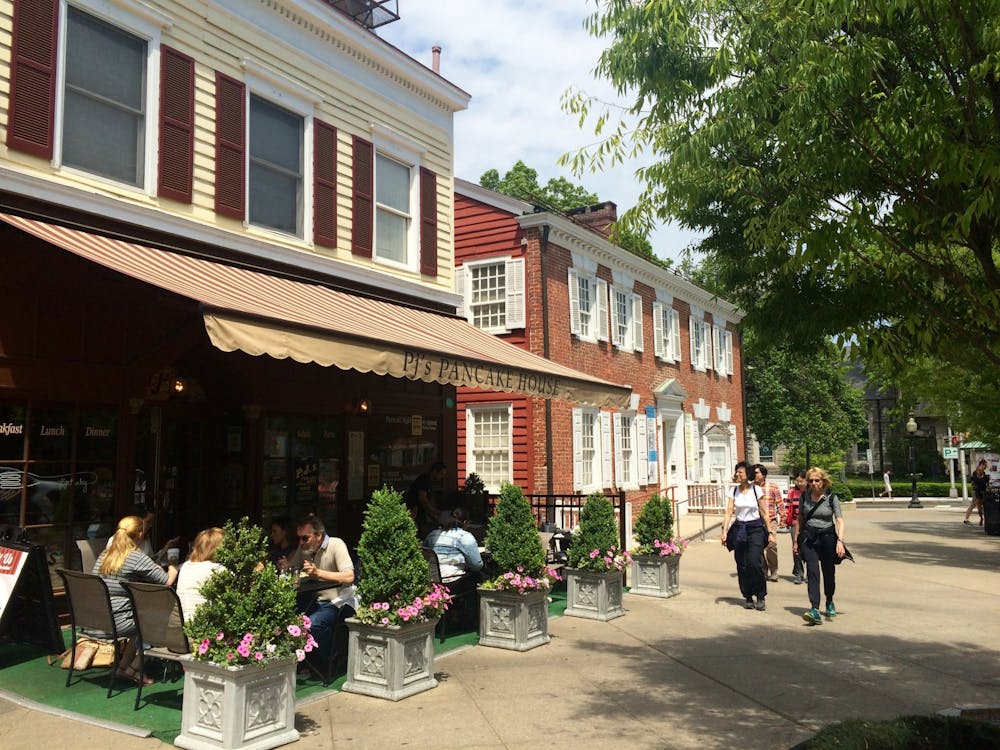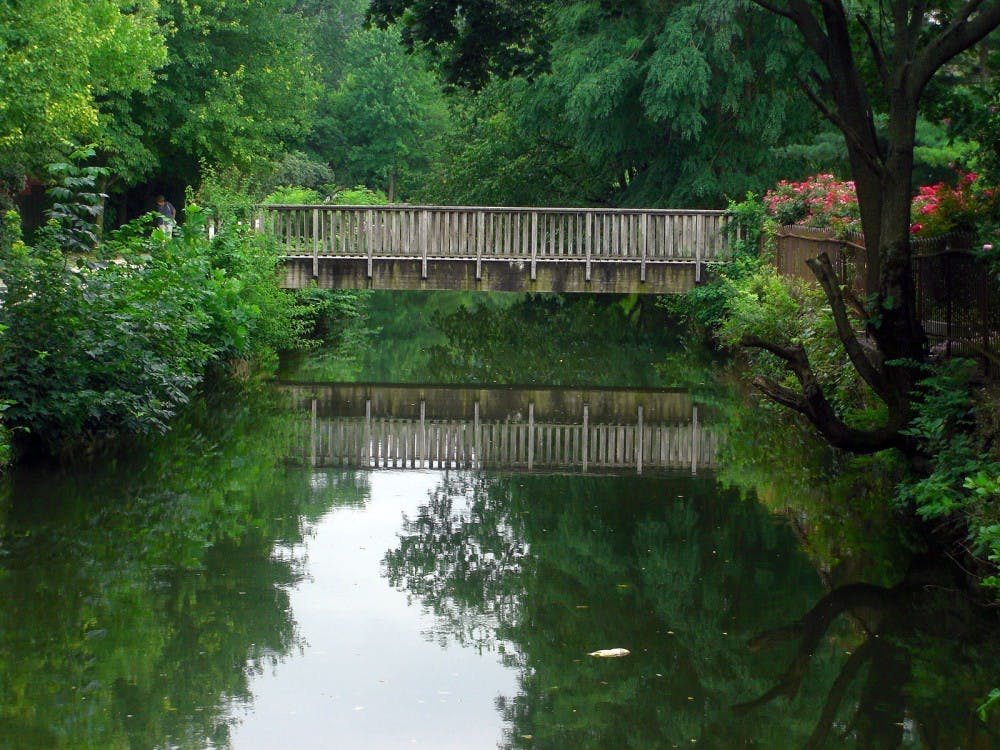Goheen claimed that interview had been off the record, but later that month he formally asked economics professor Gardener Patterson to conduct a study on coeducation and its likely consequences for Princeton. Two years later, in a Princeton Alumni Weekly (PAW) article titled "Anatomy of a Decision," Patterson said that he was undecided on the issue of coeducation at the start of the study. Had someone pressed him to take a position, however, he "probably would have answered ‘No!' Princeton was doing all right - why change it?"
On July 12, 1968, Patterson and his committee published their findings in "The Education of Women at Princeton: A Report on the Desirability and Feasibility of Princeton Entering Significantly into the Education of Women at the Undergraduate Level." The advantages of coeducation are "overwhelming," the study found. The report's justification revealed a pragmatic, economical concern for the University's self-interest. First and foremost among the considerations was Princeton's ability "to remain at the front rank of American educational institutions." Evidence strongly suggested that if Princeton did not admit women in the near future, attracting as many bright applicants and faculty members would become increasingly difficult. Indeed, 75 percent of faculty and 83 percent of students polled said that coeducation would make Princeton more appealing to male applicants.
In addition to providing a wider range of perspectives within the classroom, the committee noted, "a not unimportant benefit" of coeducation would be a decrease in false gender biases and prejudices. "We do not believe that this University, being a national institution, should deny educational opportunities to any person on the grounds of race, creed, or sex," the report stated before launching into its in-depth analysis of coeducation.
Princeton had in fact already experimented with coeducation. During the summer of 1942, 23 women enrolled at the University to study mapmaking as part of the war effort. Students and alumni alike fumed. The ‘Prince' published an editorial on June 29 lamenting, "C'est la guerre. It has asked us for our energy and our rubber, but now it asks too much. The sanctuary of the monastic order of Bengals whose harsh cloth was worn by such pillars of masculinity as Aaron Burr and Light Horse Harry Lee has been blasted open to the painted Goddesses of modernity." The infiltration of women into this bastion of masculine tradition threatened Princeton's very foundations.
By 1968, many alumni still viewed coeducation from this hostile perspective. An outraged member of the Class of 1927 wrote a letter to the editor to the ‘Prince' in response to Goheen's statement, exclaiming, "Is it to be the final triumph of ‘liberalism' that declares there is no difference between race, creed, color - and now sex? That only environments differ and everyone has a right to partake of Princeton's special surroundings?" Around the same time, indignant alumni formed ACTION: Alumni Committee to Involve Ourselves Now protesting coeducation.
But, like many other things in the '60s, the impetus toward change ultimately overwhelmed the grip of conservatism. On April 20, 1969, Princeton officially announced that it would admit women to the Class of 1973. One of the major concerns voiced in the Patterson report had been that Princeton would become "simply a husband-hunting ground" for women. The profiles of the first class of Tigresses, published by the University that April, utterly invalidated this. Indeed, one Admission Office worker told PAW that "The boys are in for a shock. Some of these girls are going to knock them off their ears." Roughly 100 freshmen women and 30 transfer students enrolled in the fall of 1969. There were 3,200 male students.
Normalcy and privacy disappeared for the "Coed 100" from the moment they set foot on campus. Photographers, reporters and television crews visited Princeton regularly during those first weeks. The summer before, Life magazine published a photograph labeled "Miss Bikini" of incoming freshman and beauty contest winner June Fletcher '73.
The administration housed the women in Pyne Hall. During the first few weeks of the fall semester, inebriated men would routinely "come to the courtyard of Pyne and just holler," Jane Leifer '73 said.

The only time Marks Arnold '73 realized how difficult it must have been to be a woman in his class was "when male students were setting off fire alarms in Pyne or spraying fire extinguishers through the windows," he said.
For some, the attention and spectacle was thrilling. Mara Melum '73 told PAW that October that she found it "very exciting" to be a part of the first class of women.
Robin Herman '73 recalled, "I dove into all the traditional activities with great enthusiasm - bought my orange and black scarf, learned all the words to Old Nassau, and made many close friends, both male and female."
It wasn't truly coeducation, however. "Everyone is making a fuss over us," Sara Sill '73 told PAW during her freshman fall. "It won't be real coeducation until the ratio gets closer, until girls aren't special."

Despite the roughly 100 female students on campus, Princeton essentially remained the all-male college it always had been. No infrastructure was established to help the old Princeton transition into the new. Dillon Gym didn't have a female locker room; therefore women could not participate in athletics. Locks were installed on all the doors of Pyne three weeks into school, which increased the women's feelings of segregation and complicated visiting procedures.
In an article published in PAW during her senior spring, Leifer wrote: "We were new babies at the hands of caring but bewildered fathers; no one knew exactly how to treat us, nor could we give them guidance as to how they could or should react." Classes usually only had one or two women in them, if any at all. Ironically, sometimes being the only one was easier than being one of two. For Leifer, looking around the room and only seeing boys allowed her to feel more integrated, she explained. Being in class with another girl, however, "only made me realize how out of place she and, consequently, I really must have been," she said.
With the skewed gender ratio, the amount of contact between men and women varied widely. Celeste Hart '73 noted in an interview with PAW that she "was afraid that Princeton men would be snobbish, but they're perfectly natural to talk to." Other women said in recent interviews that men who came from all-male prep schools seemed "more wary and awkward" than those who came from co-ed high schools.
Some male students struck up friendships and relationships with the women rather quickly, while others had little contact with them. Rob Reynolds '73 said he does "not know a single woman" from his class.
Given the paucity of women, "everyone knew who the top 10 good-looking girls were," Burke Ross'73 said, but "it was almost like 90 percent of people were looking for their love life elsewhere."
"Elsewhere" usually referred to the dates that came to Princeton on the weekends from nearby colleges. These women were known around campus as "imports," and they continued to be a significant part of Princeton's social life for the first few years of coeducation.
"Imports" didn't contribute positively to female students' adjustment to Princeton. Heading to the laundry room one Sunday during her junior year, Annalyn Swan '73 recalled, she passed an upperclassman with his import. "She was dressed to the nines, and had - I kid you not - matching pink luggage," Swan said. "As she passed me with her date I heard her say, ‘So Joe, that must be one of those co-eds.' "
Swan is also a trustee of the ‘Prince.'
Eating clubs played a significant role in normalizing relations between the sexes. A small group of Prospect Avenue's 15 active clubs voted to admit women in February 1971, including Cap & Gown and Tower clubs. Several other clubs followed suit the next year. Cottage Club held out until 1986, and Ivy Club and Tiger Inn held out until 1991 before admitting women.
Both men and women said that the clubs provided a supportive, relaxed environment for men and women to interact in regularly. Herman said she enjoyed her experience in Tower and even served as social chairman her senior year.
Reynolds, a member of Cottage, acknowledged that "tradition is hard to overturn, and it seemed at the time that having a choice of club type was a benefit." While pressure greatly increased later against Cottage, Ivy and TI to open membership to women, it was not a significant issue during the early '70s.
In an article for the Wall Street Journal commemorating her 25th reunion, Melanie Kirkpatrick '73 noted, "I found the best thing about being a member of the Class of 1973 was also the worst: Great Expectations ... Every move we made was extrapolated into a generalization about that peculiar new orange-and-black species, femina Princetonia."
While many were frustrated by the considerable pressure imposed upon them, these pioneering women excelled in their new and strange circumstances. Moreover, the hurdles at Princeton prepared them for the outside world. Herman said that her Princeton years helped her "become comfortable as the only woman in a roomful of men." After graduation, she began her journalism career with The New York Times as its first female sports reporter. A photo on the back wall of Cafe Viv shows her standing in a locker room, interviewing a hockey player. Though he is much taller than her and clad only in a small towel, Herman appears unfazed, listening intently and jotting down notes.
"People always tell me that it must have been ‘hard,' " Kirkpatrick recalled. "That's not my memory -but I think now that perhaps it was."
The passage of time can heal wounds and obscure painful memories, but it also puts things in perspective.
"I wouldn't have traded those years for anything," Swan said. "If we could make it through Princeton with lots of alums still fulminating against coeducation, and our male classmates not knowing what to make of us, we could take on any challenge."







